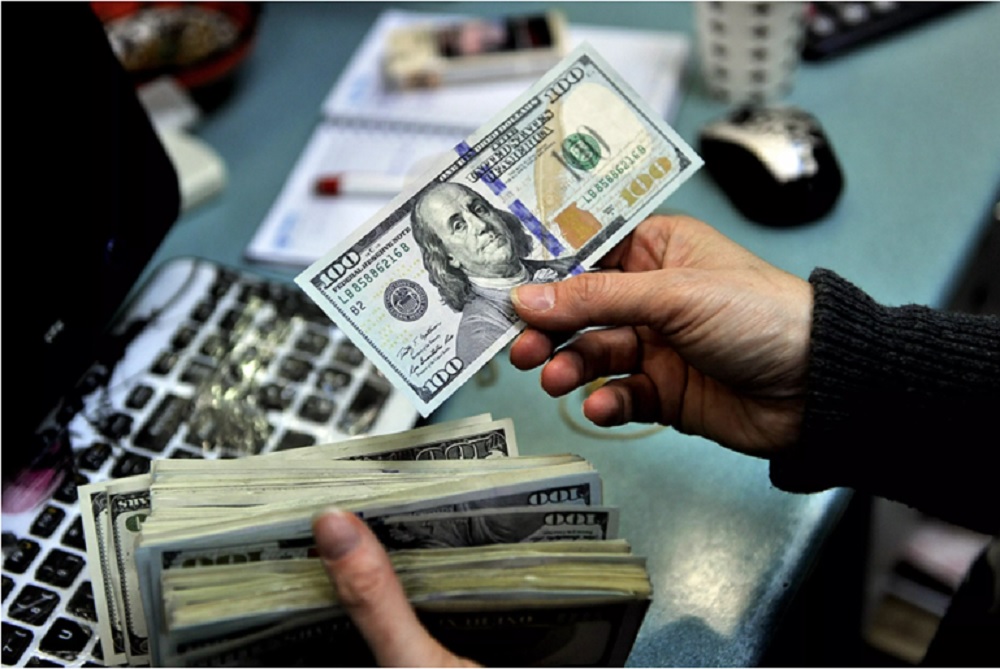No sign of a let-up in US dollar strength
There’s no sign of a let-up in US dollar strength although a large ECB rate hike this week might give the euro bulls some hope.

Against the Euro and other major currencies, the US dollar has increased.
>> Could the USD's early 1980s rise happen again?
A large ECB rate hike this week might give the euro bulls some hope, but if traders and investors are looking at monetary policy to find salvation for the euro and other currencies against the dollar, then they are looking in the wrong place.
The FX markets focus on monetary policy as the key determinant of currency movement can become too obsessive at times. Now is one such time. For the crucial ingredient in the performance of the dollar against European currencies, in particular, is not monetary policy.Instead, it is the dichotomy created by the war in Ukraine; particularly its impact on European gas prices, which have risen by more than four-fold since the start of Russia’s invasion.
According to Mr. Steve Barrow, Head of Standard Bank G10 Strategy, a sustained recovery for the euro—and other currencies—against the dollar cannot begin until a number of events occur.One is that the conflict de-escalates to a point that allows gas prices to come down or, failing this, Europe manages to replace Russian gas with supplies from elsewhere. A second pre-requisite is that the global economy starts to recover. But that seems an equally long way off given that many countries, such as those in the euro zone and the UK, have not even gone through their likely recessions yet.
The winter is going to be very hard for European countries, with substantial economic weakness and more duress in financial asset prices. Of course, the US also looks set for a difficult winter, both in terms of economic growth and asset price performance, but, as we know, this scenario is more likely to play out in the context of dollar strength, not weakness.
A key question is whether this prospective dollar strength can be avoided in some way. One such was could possibly be through aggressive monetary tightening elsewhere; another is through currency intervention. The ECB may try out the former this week, particularly if it hikes rates a large 75-bps as we expect. This could give the euro a temporary lift; especially if such a hike is accompanied by hawkish rhetoric by ECB President Lagarde, which looks very likely indeed.
But in terms of any durability, Mr. Steve Barrow thinks that the impact of higher euro zone rates will soon fade. As mentioned, the big asymmetries right now are between European and US energy prices. In contrast, monetary policy is moving symmetrically as just about all central banks are lifting rates, with Japan being the only notable exception. Admittedly, the speed and extent of these rate increases differ, but, that only impacts currencies at the margin. A far bigger factor is that the trade balances of significant energy importers, such as the euro zone, are deteriorating markedly.
>> The USD/VND rate could cool down in 2H22
The bottom line is that aggressive rate hikes from the ECB, or any other central bank outside the Fed, are not going to turn around the trend of dollar strength. Could FX intervention succeed where rate hikes fail? Admittedly, there’s no talk of intervention right now. The G7 finance ministers meeting last Friday focused on setting a price cap on Russian oil, not the multi-decade highs for the dollar against other major currencies.
However, we could see an environment developing like the early/mid 1980s when a combination of surging energy prices, soaring inflation, and rapid policy tightening by the Fed sent the dollar shooting higher to a point where policymakers were essentially forced to intervene. Such an intervention proved hugely successful.
"We see a case for similar action in the future if the dollar continues to surge. However, intervention that goes against the direction of monetary policy is usually doomed to failure, and hence, just like the successful intervention of 1985, we may need to see the Fed at least end its rate hikes, if not start to cut rates, before we can suggest that intervention will have a reasonable chance of success. If that’s the case, it looks as if intervention won’t be a feasible option until some way into 2023 at which point, of course, the dollar could be considerably stronger than it is now. In the long haul, the dollar is likely to fall back, either because of a "natural" slide as the European gas crisis ends, economic recovery begins, and the Fed starts to ease again, or because the dollar rises so far that intervention occurs to turn it around", said Mr. Steve Barrow.








